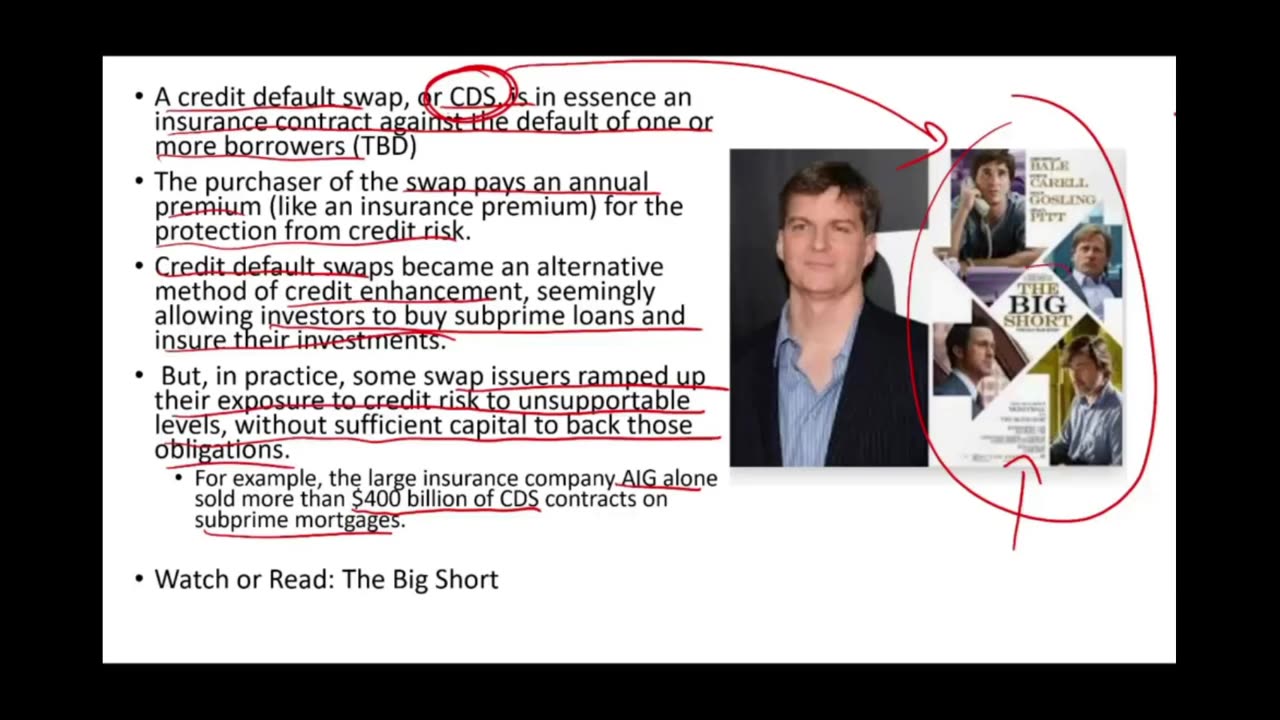Premium Only Content

The Financial Crisis of 2008 Explained Crash Course | Essentials of Investments
In this video, I discuss the financial crisis of 2008. The 2008 financial crisis was caused by financial deregulation. It led to one of the worst U.S. recessions. Deregulation could set it off again.
n early 2007, most observers thought it inconceivable that within two years the world financial system would be facing its worse crisis since the Great Depression. At the time, the economy seemed to be marching from strength to strength. The last significant macroeconomic threat had been from the collapse of the high-tech bubble in 2000–2002. But the Federal Reserve responded to an emerging recession by aggressively reducing interest rates. Figure 1.1 shows that Treasury bill rates dropped drastically between 2001 and 2004, and the LIBOR rate (LIBOR is an acronym for the London Interbank Offer Rate), which is the interest rate at which major money-center banks lend to each other, fell in tandem.6 These actions appeared to have been successful, and the recession was short-lived and mild.
By mid-decade the economy was once again apparently healthy. While the stock market had declined substantially between 2001 and 2002, Figure 1.2 shows that it reversed direction just as dramatically beginning in 2003, fully recovering all of its post-tech-meltdown losses within a few years. Of equal importance, the banking sector seemed healthy. The spread between the LIBOR rate (at which banks borrow from each other) and the Treasury bill rate (at which the U.S. government borrows), a common measure of credit risk in the banking sector (often referred to as the TED spread),was only around 0.25% in early 2007 , suggesting that fears of default or “counterparty” risk in the banking sector were extremely low.
But confidence in the power of macroeconomic policy to reduce risk, the impressive recovery of the economy from the high-tech implosion, and particularly the housing price boom following the aggressive reduction in interest rates may have sown the seeds for the debacle that played out in 2008. On the one hand, the Fed’s policy of reducing interest rates had resulted in low yields on a wide variety of investments, and investors were hungry for higher-yielding alternatives. On the other hand, low volatility and optimism about macroeconomic prospects encouraged greater tolerance for risk in the search for these higher-yielding investments. Nowhere was this more evident than in the exploding market for securitized mortgages. The U.S. housing and mortgage finance markets were at the center of a gathering storm.
Changes in Housing Finance
Prior to 1970, most mortgage loans would come from a local lender such as a neighborhood savings bank or credit union. A homeowner would borrow funds for a home purchase and repay it over a long period, commonly 30 years. A typical thrift institution would have as its major asset a portfolio of these long-term home loans, while its major liability would be the accounts of its depositors. This landscape began to change in the 1970s when Fannie Mae (FNMA, or Federal National Mortgage Association) and Freddie Mac (FHLMC, or Federal Home Loan Mortgage Corporation) began buying large quantities of mortgage loans from originators and bundling them into pools that could be traded like any other financial asset. These pools, which were essentially claims on the underlying mortgages, were soon dubbed “mortgage-backed securities,” and the process was called securitization. Fannie and Freddie quickly became the behemoths of the mortgage market, between them buying more than half of all mortgages originated by the private sector.
-
 2:05:07
2:05:07
Darkhorse Podcast
1 day agoWhy Trump Wants Greenland: The 257th Evolutionary Lens with Bret Weinstein and Heather Heying
299K584 -
 8:50:58
8:50:58
Right Side Broadcasting Network
1 day ago🎅 LIVE: Tracking Santa on Christmas Eve 2024 NORAD Santa Tracker 🎅
379K56 -
 2:48
2:48
Steven Crowder
1 day agoCROWDER CLASSICS: What’s This? | Nightmare Before Kwanzaa (Nightmare Before Christmas Parody)
340K13 -
 33:49
33:49
Quite Frankly
1 day agoThe Christmas Eve Midnight Telethon
134K23 -
 2:12:46
2:12:46
Price of Reason
1 day agoAmber Heard BACKS Blake Lively Lawsuit Against Justin Baldoni! Is Disney CEO Bob Iger in TROUBLE?
81.4K24 -
 1:01:17
1:01:17
The StoneZONE with Roger Stone
23 hours agoChristmas Edition: Why the Panama Canal is Part of the America First Agenda | The StoneZONE
150K52 -
 18:12:15
18:12:15
LFA TV
1 day agoLFA TV CHRISTMAS EVE REPLAY
159K19 -
 13:32
13:32
Scammer Payback
1 day agoChanging the Scammer's Desktop Background to his Location
25.5K6 -
 4:21
4:21
BIG NEM
1 day agoNikola Tesla's Secret to Cultivating Creativity & Genius
19.8K1 -
 15:03
15:03
The Anthony Rogers Show
2 days agoAnthony Rogers - Live at Cusumano's Pizza (Upstairs)
15.7K1